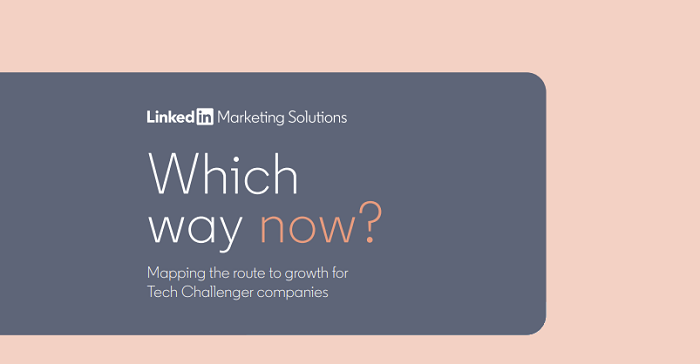SOCIAL
LinkedIn Publishes New Report on Marketing Challenges for Tech Brands

LinkedIn has published a new report on the rise of ‘Tech Challengers’ in the B2B space, which are mid-market tech brands that utilize emerging technologies to take on much bigger, more well-resourced incumbents in their respective sectors.
As explained by LinkedIn:
“Bigger than start-ups, but smaller than enterprise firms, Tech Challengers face the same customer expectations as their larger siblings, but without the gargantuan budgets. To stand out, they need to be agile as a startup, and make their marketing budget stretch further, through innovative, creative, and increasingly digital strategies.”
Given these parameters, Tech Challengers are a good segment to study for marketing examples and tips, which could help in your strategy.
To glean more insight, LinkedIn surveyed more than 200 marketing managers, directors, VPs, executives and CMOs from these challenger brands to learn about their digital advertising goals and challenges, which has culminated in a new, 21-page overview.
You can download the full Tech Challenger guide here, but in this post, we’ll take a look at some of the highlights.
First off, LinkedIn looks at the marketing budgets of Tech Challengers, to get some comparative scope on available ad spend.
LinkedIn says that Tech Challengers spend between 31% and 60% of their marketing budget on digital marketing, with the average being 44%. That equates, on average, to $57,900 per month, with 67% of brands in the segment spending between $10k and $100k.
The majority of that budget goes towards product launches and growth initiatives, with building company profile (brand awareness) not too far behind in the priority list.

In terms of key challenges, the majority still struggle with maximizing conversion, with 70% of marketers selecting ‘converting engagement to sales’ as their biggest issue.
Which is fairly universal. It’s one thing to get people to Like and comment on your posts, but it’s a whole other level when you get them to actually take real action as a result, and get in touch with your brand. That’s long been a confusing element in the digital marketing sector, with some brands hiring people that are great at generating engagement, but not so great at optimizing for sales.
It’s worth considering this in your process, and ensuring that your efforts are focused on the end goal, rather than simply feeding into on-platform metrics.
The report also looks at the most popular CRM and marketing automation platforms used by Tech Challenger brands, as well as the top sources for insights about digital marketing approaches

I’m gonna’ assume that Social Media Today fits into the ‘Digital Marketing Influencers’ category so I can feel good about our input in this respect.
LinkedIn finally delivers some key action points, including crafting the right message relative to each platform and tracking your results to measure marketing spend.
Which, in all honestly, is a little disappointing – I was hoping for some more specific, practical action points based on this pool of marketers, but instead, the action notes are fairly generic, with improving collaboration between marketing and sales being another key point in the summary.
Like, yeah, using the right messaging for each platform is pretty obvious, as is measuring performance. If you’re not doing these, you’re unlikely to see much success – but if you’re working in marketing at all and you’re not focusing on these elements, what exactly are you doing?
Maybe I’ve just read one too many of these reports (and I have read a lot), but again, I was hoping for more specific info from these innovative brands, when instead, this is a more a summary report of their challenges, as opposed to providing solutions.
There are some interesting data points either way, and if you’re working for a Tech Challenger brand, it provides some additional industry perspective for your planning.
You can read LinkedIn’s full Tech Challenger guide here.
















You must be logged in to post a comment Login